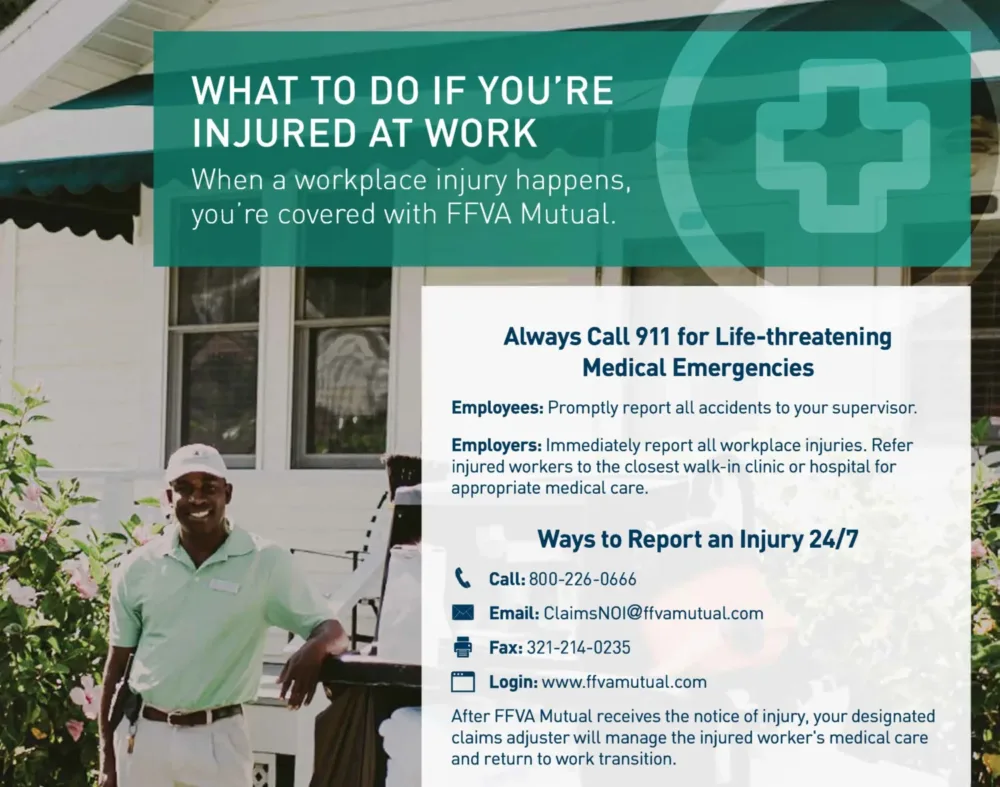Whether they’re walking, lifting or sitting down, workers face ergonomic risks that can quietly lead to serious health issues over time. From wrist strain and back pain to repetitive motion injuries, poor office ergonomics is a leading cause of discomfort and lost productivity — especially in environments where tasks are routine, physical or static.
That’s why it’s essential to design every workstation, break area and shared space with ergonomic principles in mind.
In this blog, we’ll help you spot the signs of poor ergonomics, identify practical improvements and explore how to build a proactive ergonomic program that protects both your workforce and your bottom line.
What is Ergonomics?
Ergonomics is “the study of fitting workplace conditions to the working population,” according to the Occupational Safety and Health Administration (OSHA) . In the workplace, safety professionals use this concept to create internal processes that include tasks and tools that optimize employee safety and reduce the potential for injury.
For example, an industrial organization in the metals manufacturing space may relocate an assembly workstation so that it’s closer to casting equipment and therefore cuts down on worker movement and reduces the likelihood of slips, trips or falls. This simple yet impactful shop floor enhancement incorporates concepts from a couple different scientific disciplines, including:
- Biomechanics
- Kinesiology
- Physiology
- Psychology
Virtually every ergonomic safety strategy has the same end objective: Reduce the occurrence of musculoskeletal disorders (MSDs) linked to sudden injury or overwork.

What Is Office Ergonomics?
Officer ergonomics focuses on the design and arrangement of workspaces for desk jobs. A well-designed ergonomic workspace considers everything from chair height and monitor placement to keyboard alignment and lighting conditions.
While these details may seem minor, they have a significant impact on worker health, comfortability and productivity. Not only does an ergonomic workspace prevent fatigue and awkward posture, it can also help employees avoid common musculoskeletal issues.
But office ergonomics isn’t one-size-fits-all; it requires adapting to the worker, not the other way around. Whether you’re in a field office, warehouse breakroom or mobile workstation, applying ergonomic principles — like maintaining neutral posture and supporting the arms and wrists — helps prevent long-term strain.
What is the Advantage?
Almost all organizations can benefit from well-crafted ergonomics programs that lead to easy-to-implement workspace tweaks like the one discussed above. However, increased workplace safety is not the only advantage that comes with embracing ergonomics, EHS Today reported. Businesses that take this issue seriously and continually strive for ergonomic improvement see a number of fringe benefits, most notably:
- Reductions in costs related to productivity losses and worker’s compensation.
- Reductions in waste connected to insufficient product quality.
- Increased growth linked to improved working conditions.
- Improved regulatory frameworks.
These and other benefits associated with ergonomic improvement have prompted enterprises across numerous industries to invest in preventive safety solutions and pursue accompanying process upgrades.
5 Key Aspects of Office Ergonomics
We’ve covered what ergonomics is and why it matters — but what does it entail? Let’s break down the five key aspects of ergonomics in any workplace.
1. Chair and Posture Support
An ergonomic office chair should support the spine’s natural curve, especially the lower back. Armrests should allow shoulders to relax, while chair height should keep feet flat and knees level with the hips. These basics of proper ergonomics help reduce strain and discomfort throughout the workday.
2. Desk and Monitor Height
Proper desk height ensures elbow height remains at a comfortable angle for typing and mouse use. Monitors should sit directly in front of the user, with the top of the screen at or just below eye level to minimize neck strain.
3. Keyboard and Mouse Positioning
The keyboard and mouse should be positioned so users maintain neutral posture — with straight wrists, relaxed shoulders and arms close to the body. Consider using a keyboard tray, ergonomic keyboard or external keyboard for greater flexibility.
4. Lighting and Glare Reduction
Poor lighting can lead to eye fatigue and tension headaches. Minimize glare by adjusting monitor angles or using document holders to reduce the need for constant refocusing between screens and paperwork.
5. Movement and Breaks
Static posture is a silent strain on the body. Encourage workers to take regular breaks, perform simple stretches and use standing desks or standing workstations when possible. Promoting movement can ease tension and increase overall productivity.
Is Your Office Ergonomic?
An ergonomic office setup doesn’t always require expensive equipment — but it does demand attention to detail. Some warning signs of poor ergonomics include frequent reports of fatigue, discomfort or repetitive injuries like wrist and neck strain. If employees are improvising with makeshift setups, like using boxes to raise monitors or adjusting desk height by stacking items, it may be time for an evaluation.
Workplace injuries tied to bad ergonomics can lead to lost productivity, increased claims and long-term health problems. Other red flags include inconsistent chair height, non-adjustable armrests and a lack of ergonomic furniture that supports good posture. If these conditions sound familiar, it’s time to reassess.
Developing Your Office Ergonomic Program Development
There are many reliable roadmaps that workplace safety professionals can follow when creating and sustaining an effective ergonomic safety program. An effective program includes some common best practices such as:
- Continuous ergonomic assessment: Before making changes to existing workflows, businesses must know where they stand from an ergonomic perspective. OSHA and other workplace safety organizations offer comprehensive checklists that safety professionals can use to evaluate their work environments. These indexes cover a variety of variables, from the prevalence of tasks requiring awkward wrist movements to the volume of complaints linked to MSD symptoms.
- Hazard control: Workplace safety professionals often address conventional hazards – dangers stemming from industrial equipment, for example – by implementing engineering controls and issuing personal protection equipment (PPE). They can use similar tactics when tackling ergonomic risks, EHS Today reported. Again, organizations such as OSHA offer effective strategies for reducing poor ergonomics, including workspace redesign.
- Employee involvement: Businesses that attempt to address workplace ergonomic issues from the top down, without employee buy-in, usually end up overseeing ineffective initiatives. This is easy to prevent. Workplace safety professionals should encourage workers to not only take advantage of PPE and embrace optimized workspaces but also report symptoms that might indicate the presence of an MSD, according to the National Safety Council. Promoting preventive techniques such as stretching and the occasional walk is another good way to involve workers. Workplace training is also key here, EHS Today reported. Few employees are aware of the risks that come along with inefficient or overly repetitive movement in the workplace. Enterprises that give workers this awareness and offer them physiologically sound methods for executing their job duties can make major headway.
Companies that develop ergonomic programs with these components are likely to see significant results that bolster employee productivity and therefore translate to the bottom line.
Is your business interested in rolling out a specialized safety initiative to address ergonomic risks in the workplace? Take a look at the FFVA Mutual worker and employer safety tool kits, or look through our selection of proactive safety resources.






























